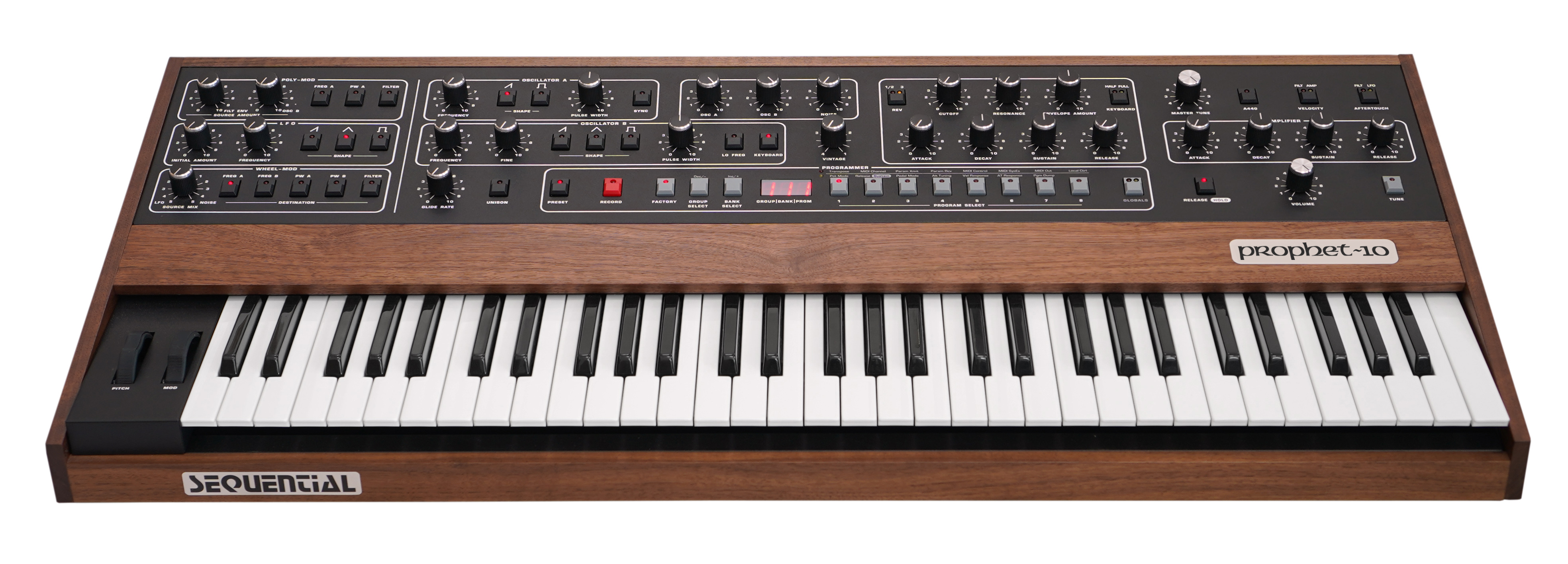Sequential announces a new Prophet-5, a faithful reboot of one of the greatest synths of all time
“It’s not often that you get to revisit your past, retrieve some of its magic, and give it new life,” says Dave Smith
Well well well. After months of what’s being described as “clandestine development,” Sequential has announced a new version of the Prophet-5, one of the greatest synthesizers in history. It’s also confirmed the Prophet-10, which doubles the voice count.
Timed to coincide with Sequential founder Dave Smith’s 70th year, the new synth takes the iconic synth designer back to his roots.
“It’s not often that you get to revisit your past, retrieve some of its magic, and give it new life,” says Smith. “The Prophet-5 was one of the most exciting instruments to appear in an equally exciting time for music and technology. It’s gratifying to rediscover that its sound and aesthetics are just as appealing now as they were then.”
Said to be faithful to the original, the new Prophet-5 features five voices with two multi-waveform analogue oscillators, resonant analogue low-pass filters and amplifiers, and a filter and amplifier envelope per voice.
Modulation is provided by a multi-waveshape LFO and Poly Mod, which allows the filter envelope and oscillator B to be routed to a variety of destinations, including filter cutoff frequency, oscillator A frequency, and oscillator A pulse width.
Those with an eye on authenticity can also be assured that the Prophet-5 features original, genuine Curtis VCOs and filters (as used in the Prophet-5 Rev3), as well as the Dave Rossum-designed SSI 2140 filter, the modern counterpart of the original SSM 2040 Rossum designed for the Prophet-5 Rev1 and Rev2.

“We made the new Prophet-5 the best of all Prophets by embodying all three revisions of the original,” says Smith. “We did this by adding a Rev switch to the front panel, so you can choose your preferred filter.
Get the MusicRadar Newsletter
Want all the hottest music and gear news, reviews, deals, features and more, direct to your inbox? Sign up here.
“We also researched what made the original P-5 sound the way it did - organic and alive - and found that a lot of that desirable character was due to fluctuations and differences in the response times and frequencies of the individual oscillators, filters, and envelopes from voice to voice. So we also added a Vintage knob that loosens all of them up like they were in the old days.
“You can dial in progressively more vintage character as you go from a very stable “4,” as in Prophet-5 Rev4, all the way to “1,” as in Prophet-5 Rev1, which was the most temperamental of all Prophet-5s. We’ve even included the original factory soundset for the full vintage experience.”
Other modern enhancements include velocity sensitivity and aftertouch on the keyboard, as well as MIDI and USB connectivity. Control voltage and gate ins/outs are also present for connecting modular synths and other gear.
The new Prophet-5 is housed in a steel and hand-oiled sustainable black walnut heartwood body, and has a five-octave, semi-weighted Fatar keybed.
Explaining his decision to also release the Prophet-10, Smith said: “I originally designed the first Prophet in both five-voice and ten-voice versions. But the five-voice model was the one that achieved mass production. We thought it would be fun and fitting to reintroduce the ten-voice as well, to make the circle complete.”
Sequential is simultaneously offering the Prophet-10, a ten-voice version of the synthesizer with the same sound engine and design. “I originally designed the first Prophet in both five-voice and ten-voice versions. But the five-voice model was the one that achieved mass production. We thought it would be fun and fitting to reintroduce the ten-voice as well, to make the circle complete.”
Both models will be available in October. The Prophet-5 priced at $3,499 and the Prophet-10 priced at $4,299. Find out more on the Sequential website.



I’m the Deputy Editor of MusicRadar, having worked on the site since its launch in 2007. I previously spent eight years working on our sister magazine, Computer Music. I’ve been playing the piano, gigging in bands and failing to finish tracks at home for more than 30 years, 24 of which I’ve also spent writing about music and the ever-changing technology used to make it.









